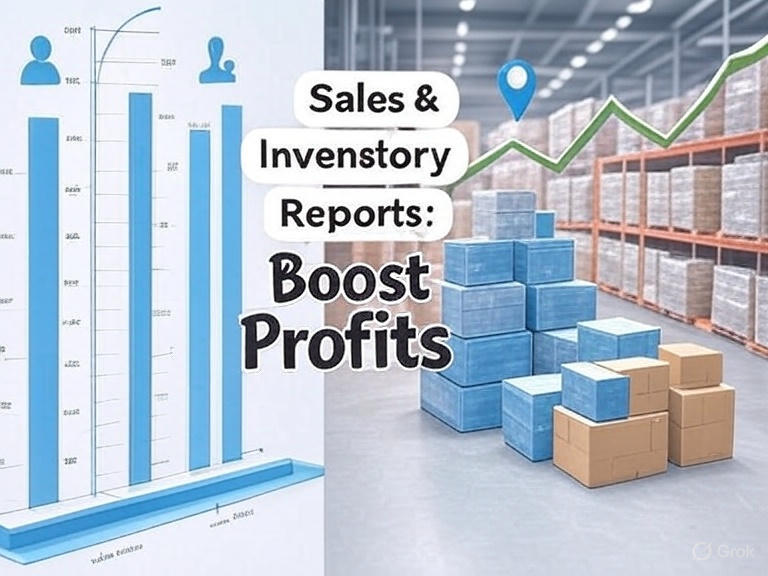
Understanding Sales Profitability and Inventory Sales Reports
Understanding Sales Profitability and Inventory Sales Reports
In today's fast-paced business environment, data-driven decision-making is critical for success. Two essential tools for businesses, particularly in retail, manufacturing, or distribution, are the Sales Profitability Report and the Inventory Sales Report. These reports provide unique insights into different aspects of business performance, enabling organizations to optimize operations, enhance profitability, and manage inventory effectively. Below, we explore these reports in detail, their purposes, and how they can be leveraged to drive strategic decisions.
Sales Profitability Report
The Sales Profitability Report is a powerful analytical tool within the broader category of Sales Reports. It provides a detailed view of the profitability of sales transactions by connecting sales data to various classifications such as customers, sales areas, groups, and branches. This report is designed to help businesses understand which segments of their operations are generating the most profit and identify areas for improvement.
Key Features of the Sales Profitability Report
Customer-Level Analysis: The report allows businesses to evaluate profitability by individual customers or customer segments. This helps identify high-value customers who contribute significantly to profits and those who may require additional attention to improve profitability.
Sales Area Breakdown: By filtering data based on geographic or regional sales areas, businesses can pinpoint which regions are performing well and which may need strategic adjustments, such as targeted marketing or resource allocation.
Group Segmentation: Sales can be analyzed by product groups or categories, enabling businesses to understand which product lines are most profitable and adjust their offerings accordingly.
Branch Performance: For organizations with multiple branches, this report highlights the profitability of each location, helping managers allocate resources effectively and identify underperforming branches.
Benefits of the Sales Profitability Report
Granular Filtering: The ability to filter results by customer, area, group, or branch allows businesses to narrow down data and focus on specific areas of interest, making it easier to identify trends or issues.
Profit Optimization: By highlighting high-margin customers, products, or regions, businesses can prioritize efforts to maximize profitability.
Strategic Decision-Making: The report provides actionable insights for sales strategies, such as focusing on high-performing regions or renegotiating terms with low-margin customers.
Example Use Case
A retail chain with multiple stores uses the Sales Profitability Report to analyze performance across its branches. By filtering the data by branch, they discover that one location is consistently underperforming due to low-margin sales. Further analysis by customer segment reveals that a specific group of customers is purchasing low-margin products. The company then implements targeted promotions to upsell higher-margin items to this group, improving overall profitability.
Inventory Sales Report
The Inventory Sales Report focuses on inventory performance, providing insights at the item and warehouse (inventory location) level. This report is essential for understanding which products are driving sales, contributing to profits, and how inventory levels are managed across different locations.
Key Features of the Inventory Sales Report
Item-Level Insights: The report breaks down sales performance by individual products, highlighting which items are top performers in terms of sales volume and profit contribution.
Warehouse-Level Analysis: For businesses with multiple inventory locations, the report shows how inventory is performing across different warehouses, helping to optimize stock allocation and reduce overstock or stockouts.
Contribution Analysis: By evaluating the contribution of each item to overall sales and profits, businesses can prioritize stocking high-performing products and phase out underperforming ones.
Benefits of the Inventory Sales Report
Inventory Optimization: The report helps businesses maintain optimal inventory levels, reducing carrying costs and minimizing the risk of stockouts or excess inventory.
Sales Performance Tracking: By identifying top-selling items, businesses can focus on promoting and restocking these products to maximize revenue.
Warehouse Efficiency: Insights into warehouse-level performance enable businesses to streamline operations, such as reallocating inventory to high-demand locations or consolidating underutilized warehouses.
Example Use Case
A wholesale distributor uses the Inventory Sales Report to analyze product performance across its three warehouses. The report reveals that one warehouse is consistently selling a specific product at a higher rate, contributing significantly to profits. However, inventory levels for this item are low, risking stockouts. The distributor reallocates inventory from other warehouses to meet demand, ensuring consistent sales and customer satisfaction.
Comparing the Two Reports
While both reports are critical for business success, they serve distinct purposes:
The Sales Profitability Report focuses on profitability and is filtered by customer, sales area, group, or branch. It answers questions like, "Which customers or regions are most profitable?"
The Inventory Sales Report focuses on inventory performance and is analyzed at the item and warehouse level. It answers questions like, "Which products are driving sales, and are they adequately stocked?"
By combining insights from both reports, businesses can align their sales strategies with inventory management to maximize efficiency and profitability.




